Ukraine, Russia, and the United States
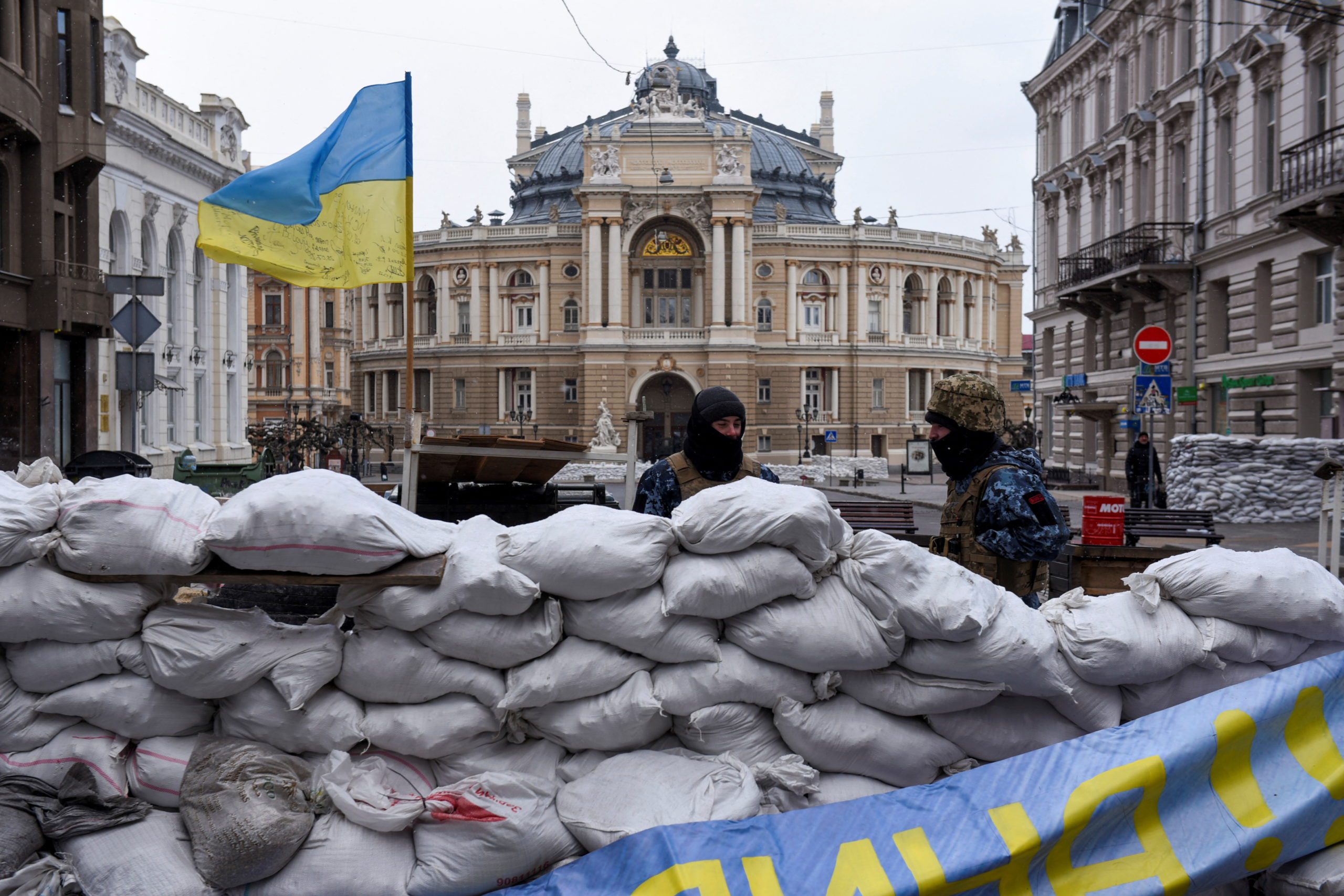
Russia’s war in Ukraine is having—and will continue to have—profound geopolitical consequences for Europe, the United States, and the world. IGA’s work, from our podcast to original commentary and analysis, is committed to making sense of the war, its geopolitical ramifications, and America’s role in the conflict.
Podcast | Commentary | Video | Modeling Democracy
NONE OF THE ABOVE
Released July 25, 2022
The Crude Truth
Emma Ashford on the Global Energy Crisis

The fallout from Russia’s war in Ukraine has disrupted the global energy market and hiked the price of fuel nearly everywhere around the world. In Europe, which finds itself caught between efforts to cut itself off from Russian oil and Moscow’s firm grip on energy exports, the repercussions of today’s energy crisis are acute. While in the United States, which experienced high prices at the pump, efforts have been underway to resolve the crisis. But how much control does the United States have, and does it require the United States to lean on the shoulder of illiberal partners like Saudi Arabia?
Often referred to as “black gold,” oil plays an important role in international affairs. Still, according to Emma Ashford, an oil and international relations expert, its role is frequently misunderstood. Emma joins the Institute for Global Affairs’ Mark Hannah to discuss her new book Oil, the State, and War and complicate commonly held misconceptions on oil’s influence on foreign policy. Mark and Emma also break down America’s efforts to address the energy crisis, green energy’s potential impact on geopolitics, and the tangled web that is the global energy market.
Listen Here: Apple Podcasts | Libsyn | Radio Public | Soundcloud | Spotify | TuneIn | RSS
Released July 5, 2022
From Kosovo to Kyiv
Jamie Shea on NATO Then and Now
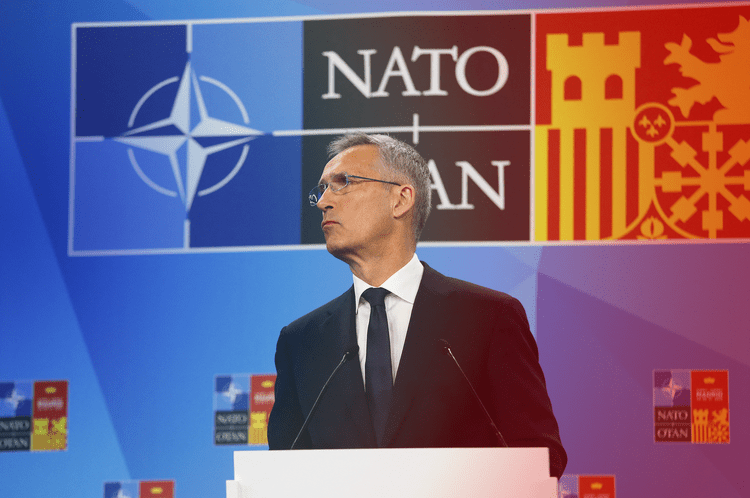
The North Atlantic Treaty Organization was created at the dawn of the Cold War to stop the expansion of the Soviet Union. But in the 1990s, when NATO intervened in the Balkan wars, it assumed a new role for itself. Our guest this week was responsible, more than two decades ago, for explaining the NATO campaign in Kosovo to the international press. Now as NATO member countries assist Ukraine in its defense against Russia, can the alliance continue to provide security on the European continent?
In this episode, the Institute for Global Affairs’ Mark Hannah is joined by Jamie Shea, a former NATO official who last served as Deputy Assistant Secretary General for Emerging Security Challenges. As NATO unveiled its strategic concept last week in Madrid, what lessons can the alliance learn from the past and what purpose will it serve in the future?
Listen Here: Apple Podcasts | Libsyn | Radio Public | Soundcloud | Spotify | TuneIn | RSS
Released May 5, 2022
War Stories
Brooke Gladstone and Fred Kaplan on the Media, War, and Ukraine

From the Crimean War of 1853 to Russia’s invasion of Ukraine this year, journalists, reporters, and the media have shaped the public’s understanding of war. But do the stories we read and the photos we see provide an impartial picture of the wars they document? As the Institute for Global Affairs’ Mark Hannah recently explained in Foreign Policy, certain aspects of American war coverage—reliance on government sources and incentives to simplify geopolitics as battles between good and evil—have long compelled news organizations to tilt toward military action.
In this special episode of None Of The Above, host of WNYC’s On The Media Brooke Gladstone and Slate’s “War Stories” columnist Fred Kaplan, are interviewed by Mark at the American Academy in Rome. Together, in these excerpts from that conversation, they unpack the media’s coverage of Russia’s war on Ukraine and the biases which influence how the media understand and depict these conflicts.
Listen Here: Apple Podcasts | Libsyn | Radio Public | Soundcloud | Spotify | TuneIn | RSS
Released April 21, 2022
Tactical Brutality
Max Fisher on the Russian Way of War
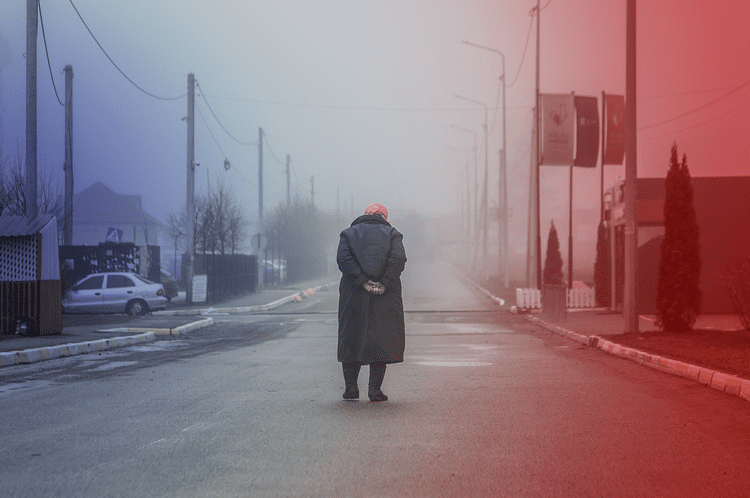
The Russian military withdrew from Bucha at the end of March, a suburb of Ukraine’s capital, Kyiv. Soon after, photos and news stories revealed Russian atrocities, including the apparent intentional killing of civilians. This is sadly characteristic of the Russian way of war in other conflicts beyond Ukraine. Some, including President Biden, have accused Russia of committing genocide in Ukraine. But even if Putin’s military is guilty of acts of genocide and war crimes, will it actually be held accountable?
In this episode of None Of The Above, the Institute for Global Affairs’ Mark Hannah looks back at history with New York Times columnist Max Fisher to understand the roots of the Russian military’s targeting of civilians and past efforts to bring war criminals to justice. Though prosecuting those in power is difficult, Max argues justice might come in other forms.
Listen Here: Apple Podcasts | Libsyn | Radio Public | Soundcloud | Spotify | TuneIn | RSS
Released March 9, 2022
Winter in Ukraine
Anatol Lieven on the Case for Ukrainian Neutrality
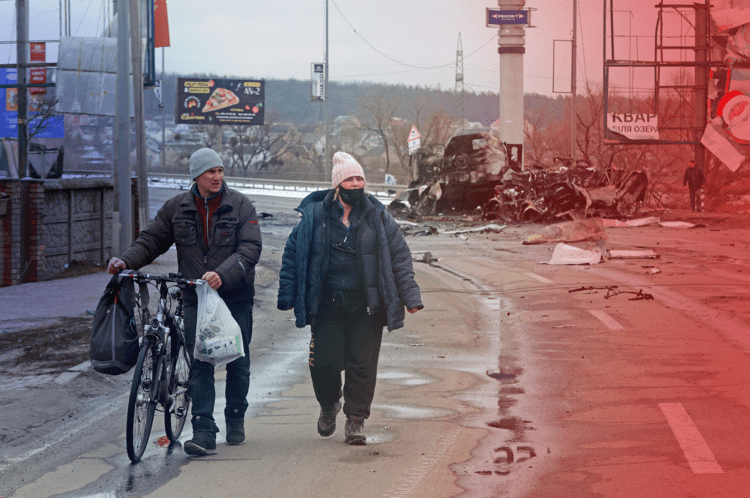
It is day fourteen of Russia’s war on Ukraine. Ukrainian resistance and Russian logistical issues have together denied Moscow a quick victory, but the fighting continues—and intensifies. Meanwhile, despite several rounds of diplomatic talks, a peaceful settlement does not seem to be in sight. However, our guest this week, Russia expert Anatol Lieven, offers proposals that he thinks could end the war.
Days before Ukrainian and Russian officials met for the third time for negotiations, Anatol joined IGA’s Mark Hannah to discuss Russia’s invasion, Ukraine’s and Russia’s interwoven history, and what a peace deal might look like. As the costs of war mount, Anatol makes it clear that compromise, though painful, is in the interest of both countries.
Listen Here: Apple Podcasts | Libsyn | Radio Public | Soundcloud | Spotify | TuneIn | RSS
Released February 22, 2022
Big Daddy Moscow
Nataliya Gumenyuk and Peter Pomerantsev Get Inside Putin’s Mind
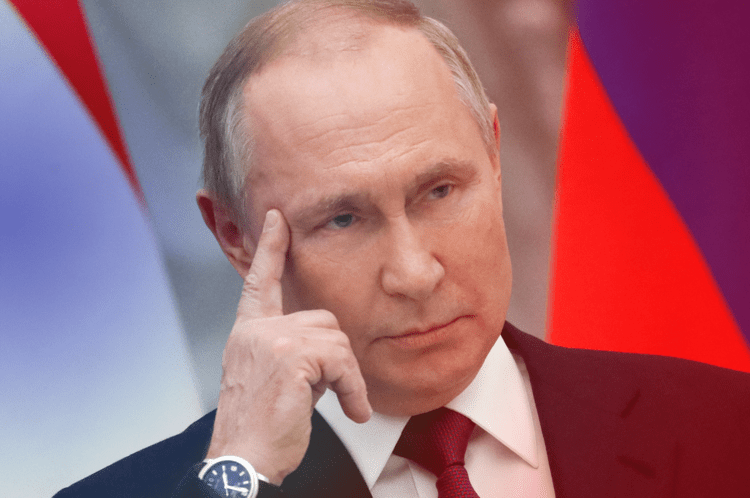
This episode contains explicit language. On Monday, Russian President Vladimir Putin ordered troops into eastern Ukraine. This follows months of tensions precipitated by Russia’s mobilization of its military on the Ukrainian border. Putin’s order came shortly after a gruff speech in which he accused Ukraine of rejecting its historical links to Russia and asserted the independence of two breakaway regions — the self-declared People’s Republics of Donetsk and Luhansk. In the week before the Kremlin’s orders, IGA’s Mark Hannah spoke with journalists Nataliya Gumenyuk and Peter Pomerantsev, who help us better understand the history behind today’s crisis, Ukraine’s perseverance under the threat of invasion, and Putin’s seeming obsession with Ukraine.
Listen Here: Apple Podcasts | Libsyn | Radio Public | Soundcloud | Spotify | TuneIn | RSS
Released January 25, 2022
How to End the Ukraine Crisis
Thomas Graham and Rajan Menon on Negotiating with Russia
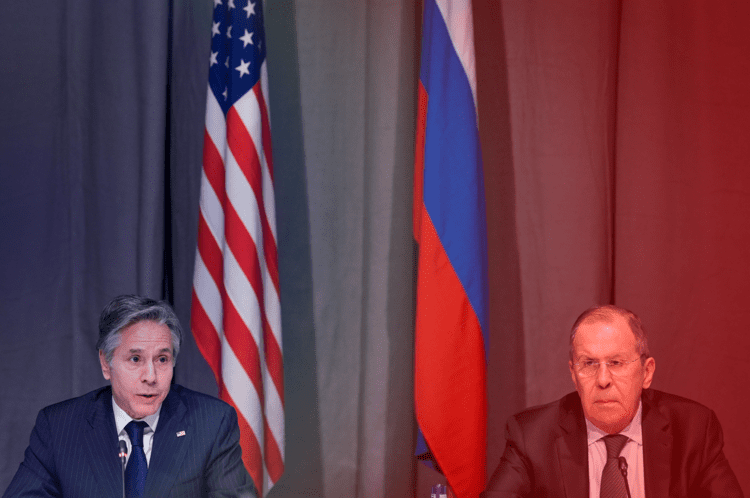
Eight years after it annexed Crimea and instigated a civil war in Eastern Ukraine, Russia has mobilized 100,000 troops near the Ukrainian border. With the threat of a Russian invasion looming, negotiations between Washington and Moscow are at an impasse. Moscow’s demands, which call for a transformation of the US-backed security order in Europe, were summarily dismissed by Washington. But according to our guests this week, the authors of the recent Politico article, “How to Get What We Want From Putin,” there is still room for a diplomatic resolution.
On this episode of None Of The Above, IGA’s Mark Hannah is joined by Thomas Graham and Rajan Menon, who provide a roadmap for negotiation which, combined with shrewd strategic thinking and skilled diplomacy, could not only quell the immediate crisis but lay the foundations for a more stable Europe.
Listen Here: Apple Podcasts | Libsyn | Radio Public | Soundcloud | Spotify | TuneIn | RSS
What in the World… Negotiating with Russia
Thomas’s and Rajan’s roadmap for negotiation includes a moratorium on the eastward expansion of NATO, which they argue could be a compromise that wouldn’t sacrifice core American interests or principles.
Released September 14, 2021
Moscow Meddling
Terrell Jermaine Starr on Rightsizing the Russia Challenge

Since the end of World War II, policymakers have puzzled over the proper way to approach Russia. US-Russia relations have arguably deteriorated to their lowest point since the end of the Cold War as a myriad of issues strain the relationship. From election interference to cyberattacks and Russia’s military expansion Westward, is America’s response effective? Or, does the United States need to consider a new approach? This week, Eurasia expert Terrell Jermaine Starr joins us to discuss the future of US-Russia relations. According to Terrell, the US strategy is hobbled by racism, groupthink, neoliberalism, and military primacy. Terrell advocates for a more inclusive strategy that emphasizes diversity of thought and securing domestic institutions at home.
Listen Here: Apple Podcasts | Libsyn | Radio Public | Soundcloud | Spotify | TuneIn | RSS
Commentary & Analysis
Published October 24, 2022
Americans Support Biden’s Response to the Ukraine War But Worry About Nuclear Escalation
By Mark Hannah and Dina Smeltz

NATO and Russia will soon conduct their annual nuclear exercises. These otherwise routine drills come at a perilous moment. For the first time since the Cold War, an American president is tested by a major power on how he might respond to a nuclear attack. Thus far, President Biden has aided Ukraine (and pressured wealthy European allies to do likewise) while not directly embroiling the U.S. in the war.
But many prominent voices in Washington urge him to do more. After two decades of overly ambitious and unsuccessful military interventions, several serious foreign policy pros yet again call on the U.S. to flex its muscle, to escalate America’s involvement in this conflict. Some urge the U.S. to double down in the face of “nuclear blackmail,” lest dictators be emboldened and the chances for nuclear war and proliferation increase. Others contend the U.S. should swiftly respond to a Russian nuclear attack with conventional strikes or even tactical nuclear use of its own.
The president, however, seems more attentive to the risks of nuclear war. He recently said he doesn’t think Putin is joking, and invoked the prospect of nuclear “Armageddon.” Biden’s more cautious approach has earned him public support and were he to depart from it and bow to the pressure emanating from hawkish enclaves inside the Beltway, he could jeopardize that. This caveat stems from two new national surveys of Americans’ foreign policy views conducted by our organizations, the Chicago Council on Global Affairs and the Institute for Global Affairs.
Survey results show substantially more Americans think the Biden administration responded well to Russia’s invasion than think it did not. The top reason given is how the U.S. strengthened the Ukrainian resistance through military aid. However, the fact that the U.S. avoided a direct confrontation with Russia or that it encouraged NATO to strengthen Europe’s self-defense capability were, together, cited about as frequently. In other words, many support the president’s response because it’s not doing too much, not because it’s doing enough.
Read more of Mark’s article in Time.
Published August 8, 2022
The West Can’t Afford to Be Dependent on Petrostates
The United States and Europe should focus foremost on achieving energy independence and disentangling themselves from the values and interests of Riyadh and Moscow.
By Mark Hannah, Senior Fellow
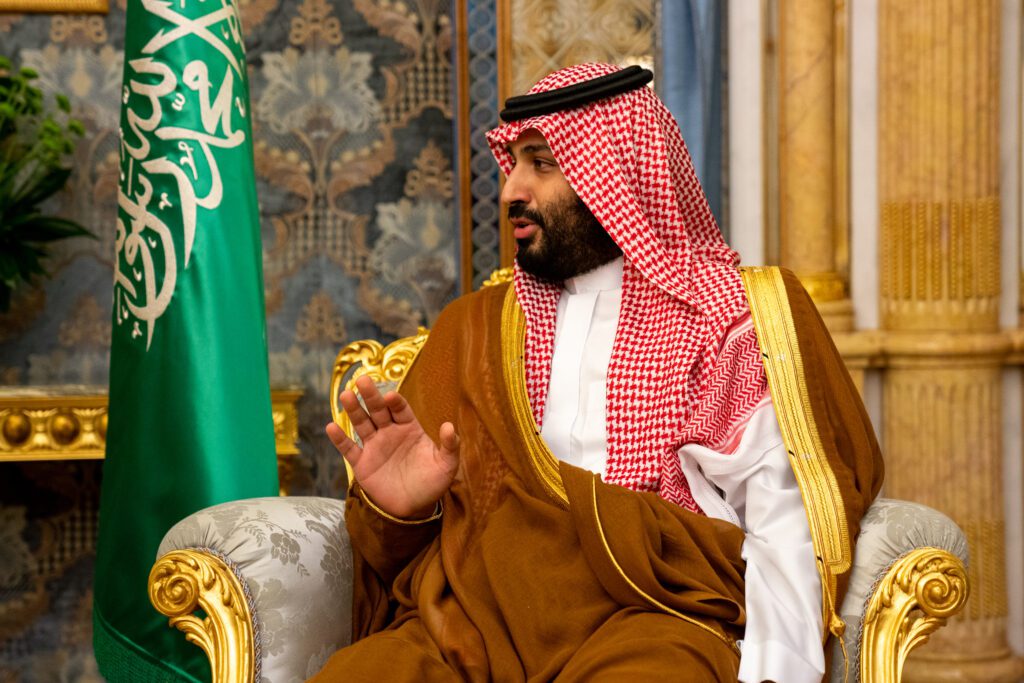
Europe sweats under record-high summer temperatures as it simultaneously braces for the cold months coming. Last week, the Russian gas company Gazprom announced a drastic cut—down to about 20 percent of capacity—in the flow of gas through the pipeline which supplies Germany. This could make for a catastrophic winter. One recent report grimly explored how Germans might revert to heating their homes with wood.
In the United States, the situation is less severe, though Americans certainly feel the pinch of high energy prices. Polls show voters worry about the rising cost of living, and especially driving costs. So, President Joe Biden reversed his campaign position to make Saudi Arabia a “pariah” and gave the kingdom’s crown prince a fist-bump and a boost to his status.
How did we end up here?
In 1938, an American company in Saudi Arabia struck oil. As the world industrialized, the kingdom swiftly became a leading oil producer and remains central to the world energy market today, with extraordinary leverage over its security provider, the United States. But Riyadh is not alone in its ability to bend the will of powerful states. Every “superproducer,” including Russia, is able to exert pressure and resist otherwise strong countries.
Most American and European consumers don’t wish to bankroll autocratic regimes, but their leaders often leave them no choice. Policy decisions in Washington and European capitals have led to this moment. But it’s not just the lack of political will and ingenuity to pivot to more renewable sources of energy: though loath to admit it, Washington has a baffling “need to be needed” by oil-rich countries. And by brokering power struggles in the Persian Gulf, where it otherwise has no compelling interest, Washington gains an excuse to play “globocop.”
Read more of Mark’s article in The National Interest.
Published July 31, 2022
Nuclear Risks: Russia’s Ukraine War Could End in Disaster
The Russo-Ukrainian War could yet go nuclear, and expanding war aims could push Russia over the brink.
By Giles David Arceneaux and Rachel Tecott, Nonresident Fellows
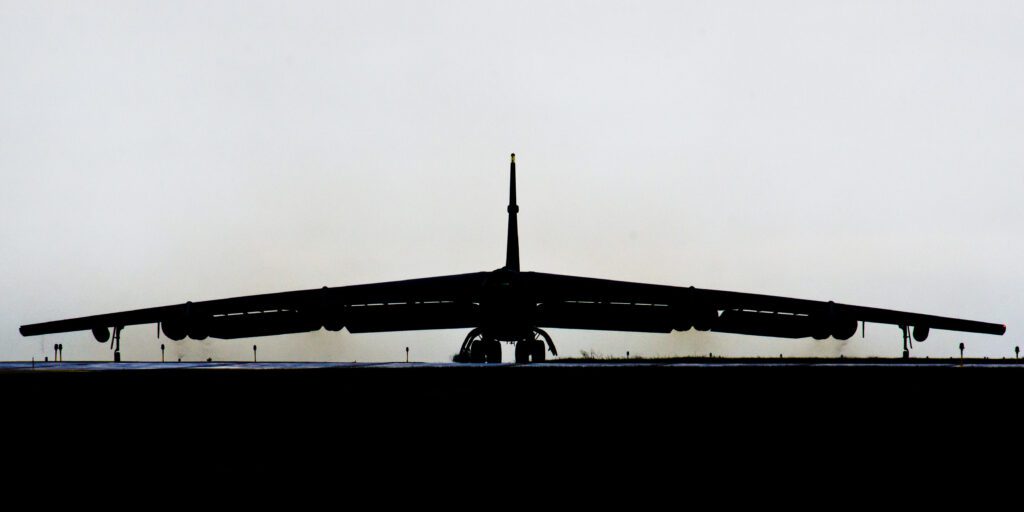
As the Russo-Ukrainian War grinds on, both Russia and Ukraine have adjusted their strategic objectives. Russia abandoned its initial goal of seizing Kyiv and installing a pro-Russian government after facing fierce Ukrainian resistance, and is now focusing on conquering Eastern Ukraine and annexing significant portions of Ukraine’s southern territory. Ukraine’s minimum objectives include reestablishing its prewar borders, with political leaders occasionally suggesting that Ukraine should expand its ambitions to reclaiming territory lost to Russia in Crimea and the Donbas region since 2014.
US strategic objectives in Ukraine are also a moving target. Secretary of Defense Lloyd Austin stated that the United States not only wants Ukraine to remain a sovereign and democratic country, but also “to see Russia weakened to the degree that it can’t do the kinds of things that it has done in invading Ukraine.” Speaker of the House Nancy Pelosi promised that the United States would support Ukraine “until the fight is done.” President Joe Biden reiterated this point, stating that the United States would support Ukraine for “as long as it takes so Russia cannot, in fact, defeat Ukraine and move beyond Ukraine.”
Analysts and commentators debate how ambitious U.S. support for Ukraine should be. Some scholars have emphasized differences in U.S. and Ukrainian interests and encouraged more limited objectives. Calls for continued and expanded military support have come to dominate the defense policy discourse.
A core point of disagreement between these two camps is the perceived likelihood of nuclear escalation. Whereas those arguing for limited objectives tend to worry about the potential for escalation across the nuclear threshold, analysts in favor of increased support for Ukraine view the costs of concessions as more dangerous than confrontation and tend to view the likelihood of escalation as minimal.
Read more of Giles’s and Rachel’s article in The National Interest.
Published July 18, 2022
It’s time for a US push to end the war in Ukraine
With a long, bloody stalemate on the horizon, the conflict’s negative ripple effects worldwide will continue to mount.
By Mark Hannah, Senior Fellow

Two months after Ukrainians impressively repelled Russia’s attack on Kyiv, the war is taking a different course.
Russian troops are consolidating their gains in Donbas as up to 1,000 Ukrainian fighters are killed or wounded daily. This puts the war on track to be among the bloodiest in modern history. Despite the delivery of heavy weaponry from the West, Ukraine is outmatched by Russian artillery — for each shell or rocket fired by Ukraine, Russia fires about ten. The war has been difficult to predict, but time is not on Ukraine’s side.
So the time for aggressive diplomacy in Ukraine is now, and the recent G7 and NATO summits, and the G20 foreign ministers meetings last week, were colossal missed opportunities to restart the peace process. Rather than strategizing about how to extract the best terms from a Russia that appears ready to negotiate, leaders of the most powerful democracies have worked to “starve” Russia of oil money and further “weaken” the Russian military, and even resorted to schoolyard taunts to Putin. This during a moment when we most need the adults in the room to help de-escalate the conflict.
There is still time — and leverage — to achieve a diplomatic settlement, after all. The United States could make clear that, while it supports Ukraine’s fight, it has different stakes. Washington has a definite interest in curbing Russian aggression in Europe but it’s not as invested in restoring Ukraine’s pre-invasion borders as, well — Ukraine is. Kyiv has nothing to lose (and potentially a lot to gain) if the war escalates into a wider confrontation between NATO and Russia. But NATO countries, including the United States, would have a lot to lose — especially if this escalation turns nuclear.
Read more of Mark’s article in Responsible Statecraft.
Published April 12, 2022
US should invest in relationships, not more guns
Amid the war in Ukraine, Europe has shown more willingness to provide for its own defense and the Biden team should encourage it.
By Zuri Linetsky, Research Fellow
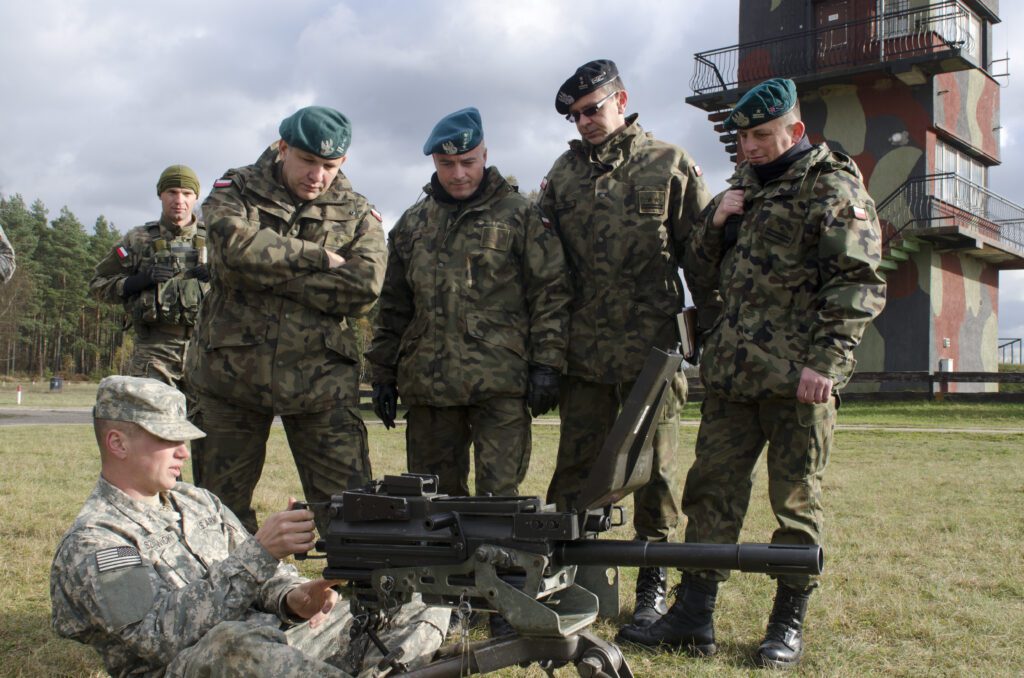
President Biden plans to increase defense spending by four percent annually through 2025, following a similar increase last year will not help the United States confront Russia or compete with China, and it may hurt the American economy.
Instead of spending more on the military, the Biden administration should empower allies and partners in achieving our common security objectives.
The Pentagon budget is already rife with waste, as four years of failed independent audits indicate. And despite claims from those who promote defense spending as a jobs creator, data shows that $1 billion spent in health care, education, or clean energy creates thousands more jobs than $1 billion spent on defense.
Defense spending also diminishes economic growth and undermines the American economy by adding to the deficit, which then contributes to rising interest rates (which are further increased by ongoing inflation). According to a recent Gallup survey, 42 percent of Americans have already rated the current economic conditions of the United States “poor.” Needlessly throwing more money at the Pentagon will only serve to further undermine those views.
Read more of Zuri’s article in Responsible Statecraft.
Published March 30, 2022
Why Is the Wartime Press Corps So Hawkish?
The United States’ most reputable media outlets have a long history of tilting toward military action.
By Mark Hannah, Senior Fellow
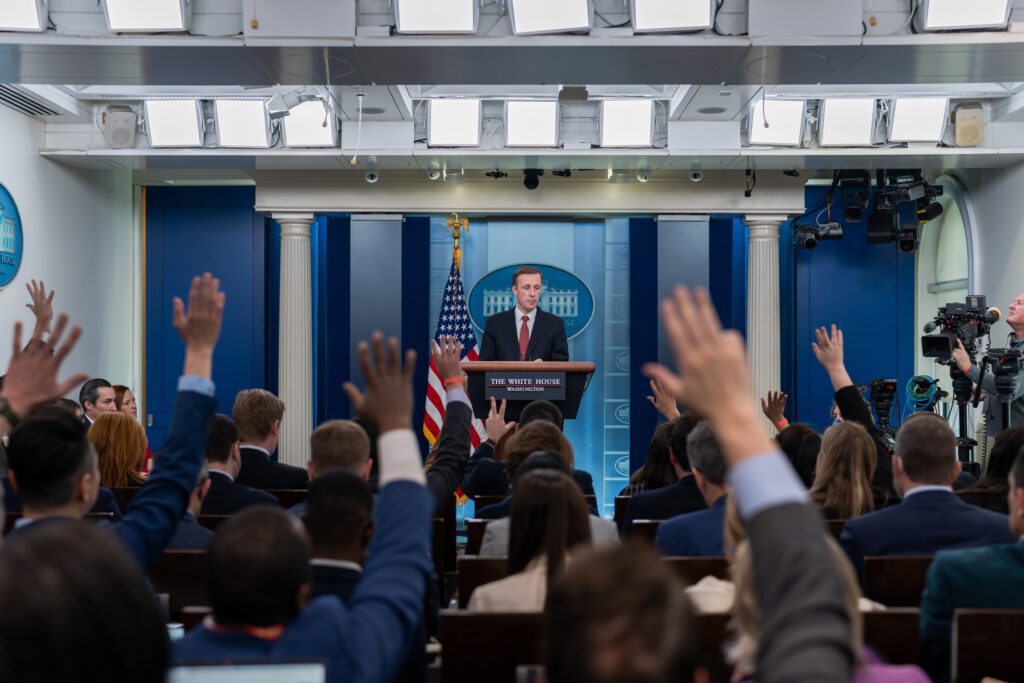
Armed conflict has a way of bringing out both the best and the worst in U.S. journalism. Since Russia invaded Ukraine, war correspondents have courageously delivered battlefield news reports that lay bare Russian President Vladimir Putin’s brutality. Yet many journalists and commentators—most of whom live comfortably removed from the front lines—have lately been calling on the United States to escalate its involvement in dangerous ways. Leading national security journalists have openly suggested that the U.S. military simply bomb Russian convoys or enact a no-fly zone over Ukraine, which would require shooting down Russian planes. The White House press corps has barraged the White House press secretary with questions, practically goading the president to intervene. Some frame the war as a matter of existential importance for U.S. security, comparing failure to intervene with appeasing former Nazi dictator Adolf Hitler.
These calls for the United States to join the fight seem especially shocking and glib, considering the serious dangers of conflict between two nuclear-armed powers. As the Atlantic Council’s Damir Marusic explains, even minor skirmishes can escalate to nuclear exchanges terrifyingly fast. Given these risks, U.S. President Joe Biden has been understandably cautious—a trait that doesn’t always play well in a polarized news culture. Fox News invited a Ukrainian official to characterize the president making the no-fly zone decision as “afraid” and a Republican senator to call it “heartless.” The Wall Street Journal editorial board thinks Putin has “succeeded in intimidating Mr. Biden” with the threat of nuclear escalation. Meanwhile, the American people are not fully informed on the details or likely consequences of such an action. Polling finds Americans supportive of a no-fly zone at first glance, with support for the idea dropping like a rock once pollsters explain it would almost certainly result in an honest-to-goodness shooting war with Russia.
In times of war, the United States’ most reputable journalists and media outlets have a long history of tilting toward military action. Just last year, mainstream news outlets subjected the Biden administration to a torrent of criticism over the widely popular decision to withdraw from Afghanistan—a wise move given two decades of failure to create a stable Afghan democracy and the need to rebalance U.S. military capabilities toward competition in Asia. Although coverage of the Trump presidency was broadly negative, then-U.S. President Donald Trump received fawning praise after he launched a strategically pointless missile strike on Syria in 2017.
Former U.S. President Barack Obama received wide support in the media for his decision to establish a no-fly zone during the First Libyan Civil War (which he would remember as the “worst mistake” of his presidency), and attracted significant criticism for subsequently avoiding intervention in Syria (likely informed by the disastrous consequences of the Libya intervention). And who can forget news outlets across the political spectrum that failed to challenge the George W. Bush administration’s shaky justifications for the Iraq War? One study found that over a three week period prior to the invasion, 64 percent of guests appearing on network and cable news programs supported the war, whereas only 10 percent were opposed.
Read more of Mark’s article in Foreign Policy.
Published March 22, 2022
How Biden’s 2009 speech on NATO solidarity foreshadowed the Ukraine-Russia crisis
Biden addressed critics who thought the US was no longer focused on central and Eastern Europe. But he didn’t exactly deny the criticism.
By Mark Hannah, Senior Fellow
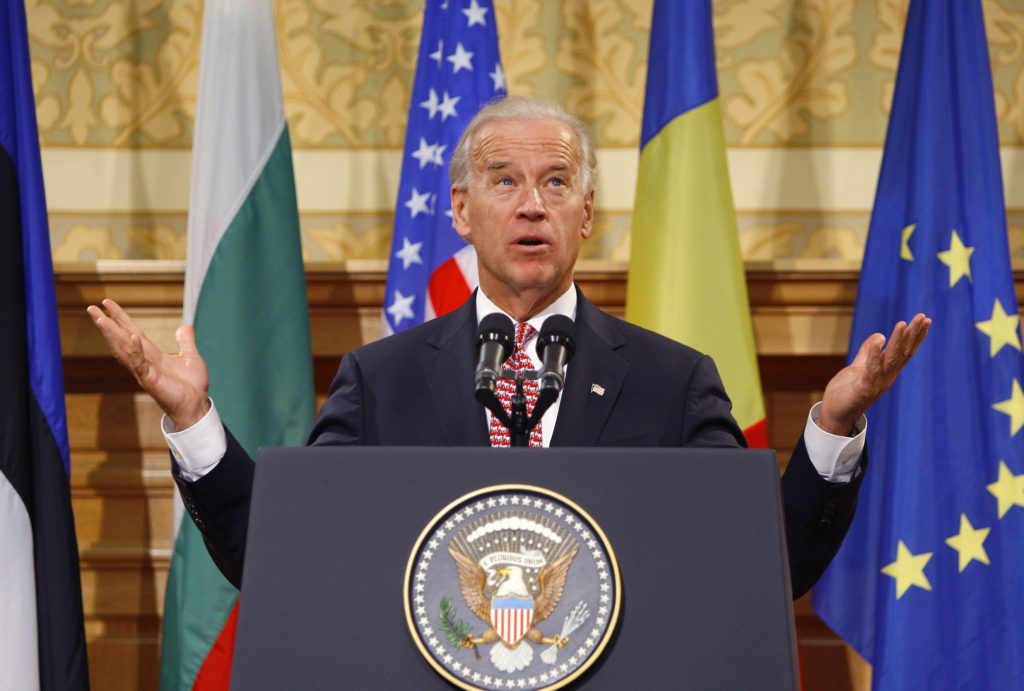
In 2009, about a year into his vice presidency, Joe Biden was in Romania, giving a speech about the importance of NATO solidarity. I was there with him, as a young advance guy paying more attention to Biden’s punctuality and the order of European flags on the stage than to the speech’s strange geopolitical moment.
At the time, hardly anyone was preoccupied with the possibility of Russia’s invading a European country. In the decades after the Cold War, much of central and Eastern Europe was growing more prosperous and democratic. So as Biden spoke — and as his speech was simultaneously translated into 15 languages from across the region, including Ukrainian — his primary preoccupation was to rally his audience to America’s wars in Iraq and Afghanistan.
There’s been a lot of news lately about NATO’s Article 5 — the provision that compels each member country to respond to an attack on an ally as though it had been attacked itself. In the treaty’s 70-year history, however, the article has been invoked only once: after the 9/11 attacks on the U.S. In retrospect, as an analyst of U.S. foreign policy who has come to understand NATO as effectively a vehicle through which the U.S. guarantees European security, it was surreal to watch the vice president of the world’s strongest country thanking Romanians and Poles and Czechs for their service in these Middle East wars.
In that 2009 speech, Biden addressed critics who thought the U.S. was no longer focused on central and Eastern Europe. But he didn’t exactly deny the criticism. “It’s precisely because of our global responsibilities and your growing capacity and willingness to meet them with us that we value our partnership,” he told the assembled diplomats and officials from across the region. In other words, the U.S. valued this region for its support in our wars — but mostly took its stability for granted.
Read more of Mark’s article in NBC News THINK.
Published March 14, 2022
US aid to Ukraine
$13.6 billion approved following Russian bombardment marks sharp increase
By Jessica Trisko Darden, Nonresident Fellow
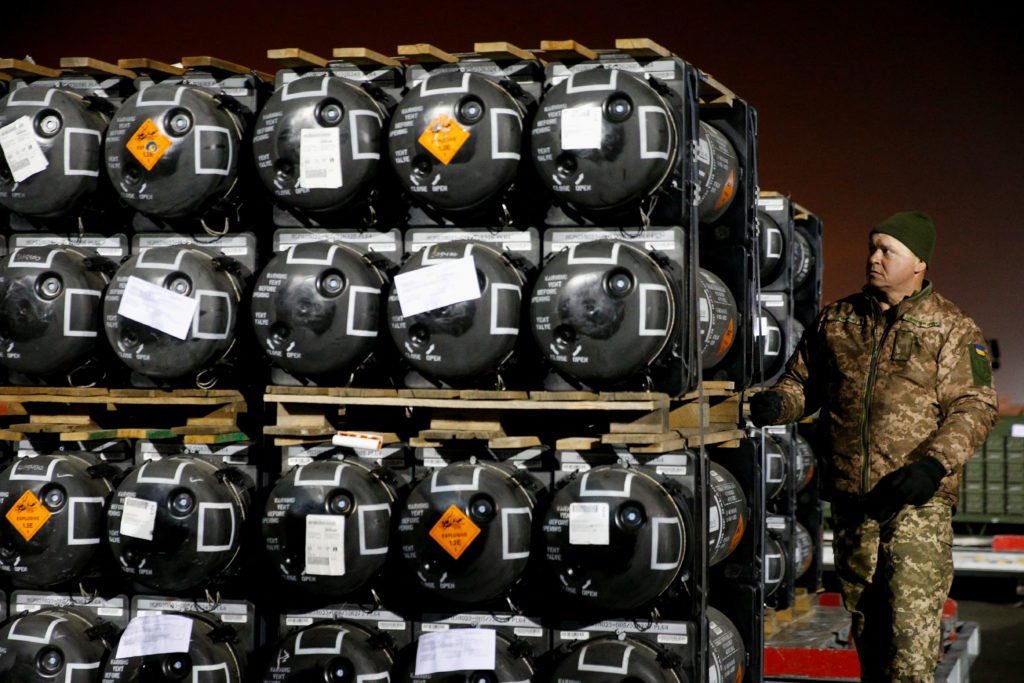
How much aid has Congress approved?
President Joe Biden signed off on an emergency spending package that included US$13.6 billion in aid for Ukraine on March 11, 2022. Roughly half the money, approved by Congress over the prior two days, is for military purposes. It includes $3.65 billion for weapons transfers and sales to Ukraine and another $3 billion to support more U.S. troops in Europe.
A portion of the funds will support economic warfare against Russia, including efforts to seize the assets of Russian oligarchs, but most of the economic aid will pay for humanitarian relief and disaster assistance. That includes helping refugees and aiding people displaced within Ukraine.
What else is the US doing?
The total amount of aid the U.S. is providing Ukraine exceeds the $13.6 billion in the spending package. On March 12, just one day after Biden signed the spending package, the White House announced another $200 million in immediate military assistance to Ukraine. It includes small arms and anti-tank and anti-aircraft weapons from U.S. defense stocks.
On the ground, the U.S. Agency for International Development, or USAID, is partnering with United Nations agencies to position critical relief supplies throughout Ukraine, including emergency food, surgery and medical kits, thermal blankets and sanitation supplies. Since Russia invaded, USAID has provided $107 million in humanitarian aid.
By the time Russia attacked on Feb. 24, Ukraine had already received most of the weapons from a $200 million military assistance package announced in December 2021.
Immediately after the invasion, Biden announced an additional $350 million in U.S. weapons. That was on top of the U.S.-provided Stinger anti-aircraft weapons and Javelin missile systems being transferred, with American authorization, from Estonia, Latvia and Lithuania to Ukraine.
And the U.S. has reportedly redirected Mi-17 helicopters originally intended for Afghanistan.
Read more of Jessica’s article in The Conversation.
Published March 11, 2022
In Ukraine and other conflicts, measuring the human cost is important. It’s also very difficult.
The battle over casualties in the Ukraine war is just beginning
By Jessica Trisko Darden, Nonresident Fellow
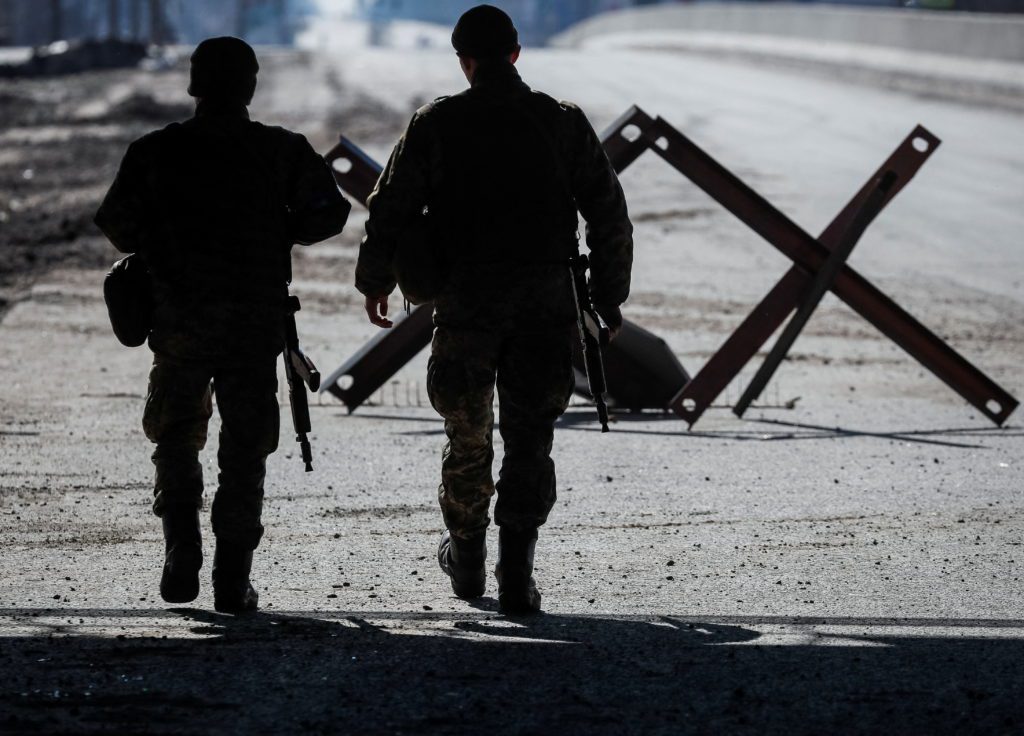
Olena Zelenska, Ukraine’s first lady, claimed this week that Russian forces were engaged in “the mass murder of Ukrainian civilians.” In her open letter to the media, Zelenska focused on child casualties of the war, some of whom died as a result of Russian shelling of Ukrainian cities.
Zelenska argued that Ukrainian civilian casualties proved that Russia’s narrative of a military operation launched to save civilians from “genocide” was false.
The competing claims being made by Ukraine and Russia about the war’s casualties don’t end there. Casualty estimates have varied widely since the war began about two weeks ago. The government of Ukraine claims that at least 11,000 Russian soldiers have been killed in the war. Russia has admitted that 498 Russian troops have died and 1,597 more have been injured. The United States also weighed in, estimating that between 2,000 and 4,000 Russian military personnel may have been killed. For its part, Ukraine has not reported any military casualties, despite international media coverage of soldiers’ funerals.
In any conflict, the outside world relies on the participants — both victims and perpetrators — to report casualties. Both have reasons to distort those numbers to support their view of events. And it is practically impossible to tell whose numbers are accurate. Governments can manipulate information about casualties because there are ambiguities built into how we define whose lives matter in wartime.
Read more of Jessica’s article in The Washington Post.
Published March 8, 2022
Urban warfare fueled by the West will likely destroy Ukraine’s cities
Sending arms is not a panacea — statistics and history show more people will die, more buildings will be leveled, once the fight is joined.
By Zuri Linetsky, Research Fellow
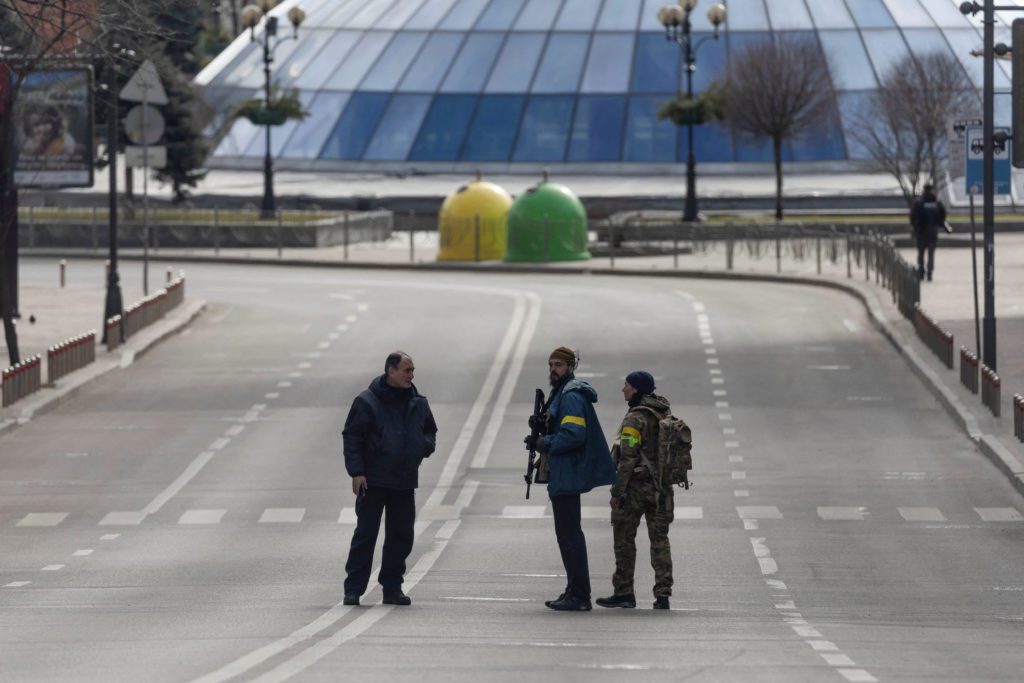
The Ukrainian Armed Forces have mounted an unexpected and capable defense after the Russian invasion nearly two weeks ago. Ukrainian forces, alongside thousands of volunteer foreign fighters have used American and European-supplied weapons effectively. Defenders have taken advantage of poor Russian military planning in the first few days of the conflict to destroy and/or capture large numbers of Russian military assets. Despite this the Russian military controls Europe’s largest nuclear power plant in southeastern Ukraine, as well as the southern city of Kherson.
Russian military advances have prompted calls for additional military aid and support for an urban insurgency to fend off Russian sieges of Ukrainian cities. Given the availability of weapons in Ukraine, as well as the growing number of foreign fighters and mercenaries in the conflict — Moscow is now reportedly recruiting Syrians skilled in urban combat to fight in Ukraine — the United States and its allies must carefully calibrate the military support they provide. Based on research I conducted, more weapons in support of an urban war will advantage Ukrainian defenders but will lead to a longer more devastating war and have long-term follow-on effects.
Continuing to supply weapons to Ukrainians defending their cities is an appealing concept because cities advantage smaller and poorly armed defenders. Cities, with their narrow streets and alleyways, allow defenders to hide in buildings and create natural hazards for advancing conventional military forces. Improvised explosive devices (IEDs) can be buried at street junctions, which slow advancing attackers. Cities limit the types and quality of intelligence attacking forces can gather about defenders, as well which makes it harder for attacking forces to fight effectively. Human intelligence is paramount for successful urban military campaigns. But, in urban wars there is little incentive for residents to share intelligence. In many cases city residents support local defenders.
Unless attacking military forces want to obliterate a city, they limit their use of tanks, armored infantry, heavy artillery, and air power. Tight urban quarters make conventional militaries operate in lighter and smaller groups, which increases their vulnerability to attack from shoulder-launched missiles, Molotov cocktails, and lightly armed civilians.
Read more of Zuri’s article in Responsible Statecraft.
Published February 28, 2022
The US Shouldn’t Interfere While Putin Loses in Ukraine
He has behaved as if he’s blind to the true stakes and likely consequences of the conflict he sought.
By Mark Hannah, Senior Fellow

In his speech announcing the invasion of Ukraine, Vladimir Putin referenced the United Nations charter, praised “the high values of human rights and freedoms,” and claimed his war represents the only “opportunity to protect Russia and our people.” This from a man regarded by many American commentators as an archrealist who makes hardheaded observations about the world as it is and cunningly employs power to reshape it according to Russia’s interests. In Mike Pompeo’s appraisal, the Russian president is a “very talented statesman” and “very shrewd.”
In reality, Mr. Putin’s latest war of aggression is motivated by a toxic mix of nostalgia and fantasy that seems likely to prove self-destructive. Mr. Putin has so far behaved like a man blind to the true stakes and probable consequences of this conflict. And the U.S., which is currently recovering from its own bout of military overreach, has the opportunity to revive a spirit of clear-eyed pragmatism that has been absent from major national security decisions in recent decades. If Mr. Putin’s actions are driven by an exaggerated view of his country’s power—and its insecurity—President Biden’s response must continue to be informed by a realistic appraisal of the ways the U.S. can (and can’t) defend its security interests and help the Ukrainian people.
This might seem like common sense, but not everyone sees it that way. Hillary Clinton recently called the war in Ukraine a “flash point in a larger global struggle between democracy and autocracy.” It is tempting to frame conflicts like these as existential struggles between competing political philosophies. Americans will—and should—always root for democracy. But reducing complex, distant conflicts to simplistic binaries obscures the actual grievances and motivations of hostile actors.
The notion that Mr. Putin’s invasion poses a threat not only to Ukrainian sovereignty but to “global democracy” or freedom itself leads some to propose extraordinary responses. Evelyn N. Farkas, who served as deputy assistant secretary of defense for Russia, Ukraine and Eurasia in the Obama administration, has called for an international coalition to enforce a no-fly zone over Ukraine. So far, the Biden administration has prudently ignored this and other such options, recognizing that America’s interests in Ukraine don’t justify risking war with a nuclear-armed Russia. Eliot Cohen has proposed that the U.S. should arm a hypothetical Ukrainian insurgency—which the Biden administration has reportedly considered—to raise the costs for Russia and deter other nations that might be considering malign activities. But Ukraine is a flat country unsuited to guerrilla warfare. Backing an insurgency could ignite a wider conflict between the U.S. and Russia, and increase the violence inflicted on Ukrainian civilians.
Read more of Mark’s article in The Wall Street Journal.
Published February 14, 2022
The Great Power of Ukraine
Why a hard-won diplomatic victory is so important for the United States
By Zuri Linetsky, Research Fellow

The current crisis in Ukraine intensifies a stalemate over European security into a standoff between three great powers. Russia caused the crisis when it moved an estimated 130,000 troops toward Ukraine’s borders and issued a set of demands, which the US swiftly rejected. The US asked China to use its influence with Russia to help facilitate a diplomatic solution to the standoff. But instead, the Chinese Foreign Minister validated Russian security concerns about NATO’s eastward expansion and encouraged all countries to deescalate tensions. Then, at the UN, China rejected the American claim that Russian military mobilization threatened global security and asserted that the probability of a war in Ukraine is exaggerated by the US, deepening its involvement and ties to Russia. What the Biden Administration does next in Ukraine will either increase the likelihood of war with China or enhance its ability to protect US interests in Asia.
Concessions to Russia in Ukraine could defuse tensions in the long-simmering conflict and signal to China that the US does not need to rely on force to get what it wants. However, allowing a limited war in Ukraine to occur may undermine US policy toward Taiwan and increase the likelihood of a future conflict between the US and China over Taiwan.
Some American foreign policy experts think a war in defense of Ukraine is critical to protect the American-led global order and the credibility of the American security commitment to Taiwan. Others say drawing parallels between Ukraine and Taiwan is lazy analysis. They all ignore the fact that China learns from every American military and diplomatic decision, as Rush Doshi demonstrated. The United States must focus on what China learns from American choices in this Ukrainian crisis, as China’s lessons will inform Sino-American relations in Asia.
Diplomatic concessions in a negotiated resolution to the Ukrainian standoff would reinforce American commitments to Asia in several ways. First, China uses the threat of military force cautiously to achieve its interests, and uses diplomacy and economic inducements at least as often as coercion. Concessions therefore bolster the Biden Administration’s reputation with China for effective diplomacy. Second, China evaluates the credibility of US commitments in Asia by what America says and does. American diplomacy in previous disputes in the South China Sea — like the Scarborough Shoal standoff — prevented China from using force. Diplomacy in Ukraine would help China see that the US does not prefer conflict and restore some value to American strategic ambiguity toward Taiwan.
Read more of Zuri’s article in Inkstick.
VIDEO
Premiered April 7, 2022
Germany’s Identity Crisis: European Security After Russia’s Invasion of Ukraine
Russia’s invasion of Ukraine has prompted a sudden shift in German defense policy. After years of resisting pleas by the US to take more responsibility for Europe’s defense, Germany hiked military spending and declared its intention to wean itself off its dependence on Russian energy. As Western Europe’s most powerful country, with influence felt throughout the continent, Germany’s reversal could have sweeping ramifications for the future of European security and the North Atlantic Treaty Organization
German national security experts Liana Fix, Andreas Kluth, and Cathryn Clüver Ashbrook discuss this about-face. Protected by America’s security umbrella, Germany, they argue, had come to view power politics as a thing of the past, and accommodation as the way to address Russia’s malign behavior. Now awakened to Europe’s geopolitical realities, Germany will have to reimagine a more active role in European security.
MODELING DEMOCRACY
Aired June 16, 2022
EGF Debuts New International Survey on MSNBC’s Morning Joe Program
IGA senior fellow Mark Hannah shared top-line findings of the report, “Democracy’s Promise: International Views of America in the Biden Era,” on a June 16, 2022, segment of MSNBC’s Morning Joe. Mark discussed how survey takers in nine countries view American democracy, the Biden administration’s response to Russia’s war in Ukraine, America’s decision to withdraw US forces from Afghanistan, and more.
Read the full report here.
This post is part of Independent America, a research project led out by IGA senior fellow Mark Hannah, which seeks to explore how US foreign policy could better be tailored to new global realities and to the preferences of American voters.
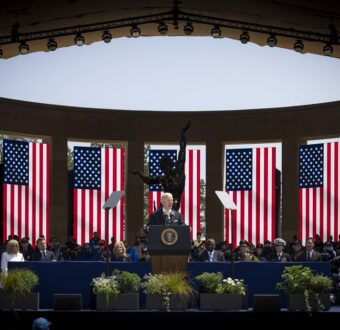




NATO at 75: What’s Its Future?